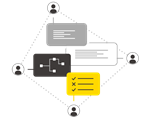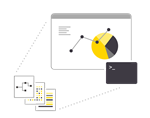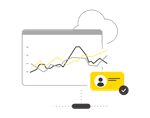The terms “read - transform - analyze - deploy” describe the typical phases of a data science project. We often have our favorite phases of the model we enjoy focusing on, but data science is only end to end if the final deployment phase is also included. This is where data science brings value to a business, when the data science applications that have been created are subsequently productionized.
We can create data science with KNIME Analytics Platform by building workflows. KNIME Analytics Platform itself already offers us different deployment options, e.g. creating BIRT reports, applying your trained model, creating interactive composite views, writing processed data to a file or database, and so on. But what if you want to automate the deployment or collaborate in a team? Or make your workflow easily accessible via a web browser and let your data analysts interact with the workflow and see the results?
Then it makes sense to start using KNIME Server, our enterprise software for team based collaboration, automation, management, and deployment of data science workflows as analytical applications and services.
KNIME Server e-learning course
The new, free e-learning course discusses the areas of collaboration, automation, deployment, and management in three chapters, each containing a series of short videos plus questions to test your knowledge.

Chapter 1 - Collaboration
Connecting and deploying items to KNIME Server from KNIME ANalytics Platform. The two videos in chapter 1 explain how to establish your server connection and how to set access rights.

Chapter 2 - Automation and Deployment
The three videos in this chapter discuss how you can execute workflows on KNIME Server for automation and deployment. They look closely at remote execution on KNIME Server, the KNIME Remote Workflow Editor, and the KNIME WebPortal.

Chapter 3 - Management
The aim of this section is to show you additional functionality to manage your projects more effectively. The chapter is split into three videos, which explain versioning, workflow comparison, and node comparison.
Look up the course:
Have a look at our videos on our e-learning course page. And the link below takes you to the first video about how to connect to KNIME Server, in Chapter 1 - Collaboration.
